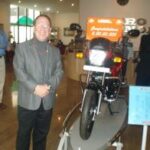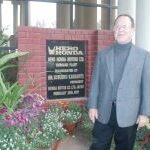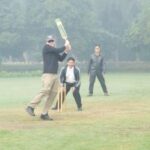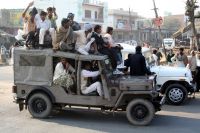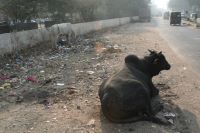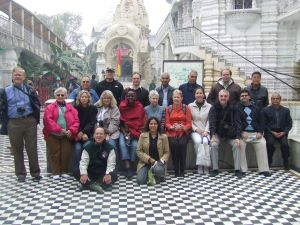We’ve spent the last two days in three activities that pretty well summarize what I’m bringing back from India.
The first is its past. As in any country with 10,000 years of history (that’s what they tell us), the oracles from the past for predicting the future point in any direction you want them to. We went to a show at the Red Fort here, which not only described the history (in a winners-tell-t heir-version way), but getting there took us past the Jama Masjid, the Friday Mosque that reminds one India is the second biggest Muslim country in the world, and the “unity amid diversity” must take account of some of the prejudices born in that past. The last episode they described was the incarceration of Indian soldiers in the fort who had fought in World War II–with Subhas Bose, in the Indian National Army the Japanese formed to fight the British in India. The three soldiers were tried by a British court for treason, convicted, but after Independence the verdict was set aside. Incidentally, the announcer suggested the Moghuls declined when one of the emperors married a “common slut.” [sic]
heir-version way), but getting there took us past the Jama Masjid, the Friday Mosque that reminds one India is the second biggest Muslim country in the world, and the “unity amid diversity” must take account of some of the prejudices born in that past. The last episode they described was the incarceration of Indian soldiers in the fort who had fought in World War II–with Subhas Bose, in the Indian National Army the Japanese formed to fight the British in India. The three soldiers were tried by a British court for treason, convicted, but after Independence the verdict was set aside. Incidentally, the announcer suggested the Moghuls declined when one of the emperors married a “common slut.” [sic]
The 100 mile 5 1/2 hour ride to Agra, one of the capitals of the Mughal empire underscored the splendor that was India’s around the 17th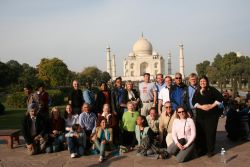 century when it was the richest country in the world, or at least had some of the richest people in the world–it’s rulers. Shah Jahan, who built the Red Fort in Delhi, and moved the capital there, built the Taj Mahal to honor, as a tomb, the main wife he loved. She bore him 14 children in 16 years and died during childbirth. I’ve seen it twice before, and considered myself lucky to have seen it once. And it is just as stunning as it was to me the third time, one of those visuals that not even digital photography can capture. At least this time I did not have to shoot 3 rolls of film.
century when it was the richest country in the world, or at least had some of the richest people in the world–it’s rulers. Shah Jahan, who built the Red Fort in Delhi, and moved the capital there, built the Taj Mahal to honor, as a tomb, the main wife he loved. She bore him 14 children in 16 years and died during childbirth. I’ve seen it twice before, and considered myself lucky to have seen it once. And it is just as stunning as it was to me the third time, one of those visuals that not even digital photography can capture. At least this time I did not have to shoot 3 rolls of film.
We also saw the  Red Fort in Agra, begun by the earlier Moghuls, even pre Moghuls, and the place where Shah Jahan was imprisoned by his son, who decided he wanted to be the emperor and overthrew his father, killed his older brothers, who had a legitimate claim, and locked his dad up. And he turned out to be rather paranoid, beginning the descent of India that led to its sacking by the Persians and the conquest by the British. After the mutiny/war of independence (choose one; they’re both right depending on your audience), British troops were garrisoned in the Red Fort. And their barracks are occupied today by Indian troops.
Red Fort in Agra, begun by the earlier Moghuls, even pre Moghuls, and the place where Shah Jahan was imprisoned by his son, who decided he wanted to be the emperor and overthrew his father, killed his older brothers, who had a legitimate claim, and locked his dad up. And he turned out to be rather paranoid, beginning the descent of India that led to its sacking by the Persians and the conquest by the British. After the mutiny/war of independence (choose one; they’re both right depending on your audience), British troops were garrisoned in the Red Fort. And their barracks are occupied today by Indian troops.
The tomb of Akbar in Agra is also stunning. Akbar’s desire for social harmony (reversed by Shah Jahan’s son, Aurangzeb, and a troublesome question in India today) led him to issue edicts enforcing ethnic harmony. It helped that his wives were Sikhs, Parsis, Jains, etc. Love builds not just buildings, but also countries.
The ride to the Taj within Agra showed something about the environment: the biggest threat to its existence is not the crowds, which Saturday reached Forbidden City (in China) proportions, but the pollution that is eating the marble. Hence, our bus stopped short of the area, and electric vans took us closer to the swarm of hawkers who wanted to sell us postcards, books, and bangles.
 The five and a half hour ride showed something about infrastructure, too. As my GPS said, the distance was only about 100 miles. Why so long? Traffic was one thing. It took an hour to get from the Taj area to the outskirts of Agra, which has fewer than 2 million people. Part of the problem was narrow streets, part too many cars, and part the plethora of vehicles on it. Even though a major chunk, perhaps 60 of the miles, were on superhighway, it’s not a superhighway like we have. More like 51 south of Bloomington, where it goes right through the city of Wapella. Put horses, camels, motorcycles on the edges, and sometimes on
The five and a half hour ride showed something about infrastructure, too. As my GPS said, the distance was only about 100 miles. Why so long? Traffic was one thing. It took an hour to get from the Taj area to the outskirts of Agra, which has fewer than 2 million people. Part of the problem was narrow streets, part too many cars, and part the plethora of vehicles on it. Even though a major chunk, perhaps 60 of the miles, were on superhighway, it’s not a superhighway like we have. More like 51 south of Bloomington, where it goes right through the city of Wapella. Put horses, camels, motorcycles on the edges, and sometimes on 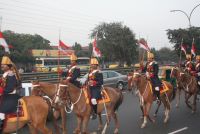 the main lanes, and women with dried dung platters on their head (fuel!) and you get a picture of the wonderful chaos that makes patience a virtue in the East. Plus, the super highway does not extend to the city where we’re at, so we took back roads, and the back roads are semi-finished, sometimes busy, and usually bumpy. The wonderful weather we’ve had, cool and with a rainstorm one morning, cut down on the dust.
the main lanes, and women with dried dung platters on their head (fuel!) and you get a picture of the wonderful chaos that makes patience a virtue in the East. Plus, the super highway does not extend to the city where we’re at, so we took back roads, and the back roads are semi-finished, sometimes busy, and usually bumpy. The wonderful weather we’ve had, cool and with a rainstorm one morning, cut down on the dust.
 Second, our site visit was an indication of all you hear that is positive about the Indian economy. We went to Genpact, which GE started and spun off ten years ago. As we approached the building in our suburb, Gurgaon, about an hour south of downtown Delhi, it looked to me like many places in China–huge skyscrapers with more under construction, a wide street with some homeless or rather floating population living in tents for the construction–and a Chinese restaurant to complete the illusion. When we got inside, we got treated to the best presentation we had, in at least two ways. The company is global–operating in at least 9 countries, with 33,000 employees-and meets and sets global standards. It started doing financial accounting for GE and has moved up the value chain because Indians are numerous, well educated (300,000 students vie each year for the 2000 spots in the Indian Technical Institutes, its IIT; the winner last year came from a village without electricity, which shows how determined Indians are to succeed), and hard working, especially in areas Americans have shucked, like math. They told us turnover in their company, which as I said does Business Processing (maybe for State Farm, not all their clients will let them list the names publicly) was 30 percent, rather than the industry’s 70 percent because they benchmark great practices elsewhere and adopt them, including the 6 sigma of parent GE (I had a feeling I was meeting Jack Welch’s offspring, Welch being the GE Chairman at the time Genpact was conceived and born).
Second, our site visit was an indication of all you hear that is positive about the Indian economy. We went to Genpact, which GE started and spun off ten years ago. As we approached the building in our suburb, Gurgaon, about an hour south of downtown Delhi, it looked to me like many places in China–huge skyscrapers with more under construction, a wide street with some homeless or rather floating population living in tents for the construction–and a Chinese restaurant to complete the illusion. When we got inside, we got treated to the best presentation we had, in at least two ways. The company is global–operating in at least 9 countries, with 33,000 employees-and meets and sets global standards. It started doing financial accounting for GE and has moved up the value chain because Indians are numerous, well educated (300,000 students vie each year for the 2000 spots in the Indian Technical Institutes, its IIT; the winner last year came from a village without electricity, which shows how determined Indians are to succeed), and hard working, especially in areas Americans have shucked, like math. They told us turnover in their company, which as I said does Business Processing (maybe for State Farm, not all their clients will let them list the names publicly) was 30 percent, rather than the industry’s 70 percent because they benchmark great practices elsewhere and adopt them, including the 6 sigma of parent GE (I had a feeling I was meeting Jack Welch’s offspring, Welch being the GE Chairman at the time Genpact was conceived and born).
One other thing about the company that was noteworthy; being in customer service, they demonstrated it. They were alone in asking us what we wanted to know, and while they had a canned presentation, they answered all our questions. India being 11 1/2 hours different from home made it possible for them to work all night (our night) and have information back to the us for the business day, a real competitive advantage in a wireless world.
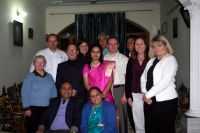 Finally, Mr. Shirmali, the director of the institute, invited us to his house. He lives in a gated community about a mile from the campus in Gurgaon. The paper had a notice about the shortages of electricity which regularly goes off. At the Institute there’s a 20-second delay before our generator kicks in. In the suburb, energy is directed to the IT companies, while manufacturers complain that they have 10 hour shortages at times. And this is a heavy industry area!
Finally, Mr. Shirmali, the director of the institute, invited us to his house. He lives in a gated community about a mile from the campus in Gurgaon. The paper had a notice about the shortages of electricity which regularly goes off. At the Institute there’s a 20-second delay before our generator kicks in. In the suburb, energy is directed to the IT companies, while manufacturers complain that they have 10 hour shortages at times. And this is a heavy industry area!
Mr. S. wanted to show us his family. His house has, he said, 36 rooms to accommodate them when his extended family comes from Rajasthan or where they are now (he has 8 brothers and 100 family members regularly converge). He said he’s a Brahmin, the upper caste, and while caste is officially off the books, we read in the paper about a Dalit (untouchable) being beaten for trying to get into a rural Hindu temple this week.
He introduced his wife of 30 some years, who was “arranged” for him as a bride when he was 20 and she was 16. Their parents were best friends and agreed if one had a son and the other a daughter they would get married. While that was then, he described the marriages of his son and daughter, which were very similar (my brother knew her father’s sister, we met with the family and agreed to introduce the children, etc.). The persistence of the past is all around a country of 10,000-year history!
E.g., matrimonial adverts in the paper:
“High Status business industrialist well established South Delhi base
Pnjab Arora family invites alliance for their slim, fair, cultured, homely
daughter, 157 cms…. Delhi/Mumbai based boy from equal status, business
family… let me know if you’re interested. ”
I wouldn’t presume to predict the future here; although I can’t muster the bluster of most of our optimistic professors, who rightly point to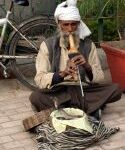 progress (cutting poverty–living on $1 a day–in half in 15 years), the challenges are daunting. I’ve learned from China to temper my western cynicism, though, and suggest you look for information about the current meetings in Beijing between Prime Minister Singh of India and Hu Jin tao of China. If they get beyond geography and politics, they have 40 percent of the world’s population.
progress (cutting poverty–living on $1 a day–in half in 15 years), the challenges are daunting. I’ve learned from China to temper my western cynicism, though, and suggest you look for information about the current meetings in Beijing between Prime Minister Singh of India and Hu Jin tao of China. If they get beyond geography and politics, they have 40 percent of the world’s population.
Any way, thanks for letting me share my thoughts and experiences with you. See you after a very long day and a very long flight for me.
And remember, what ever I have said about India, the opposite is also true.
Good morning.
